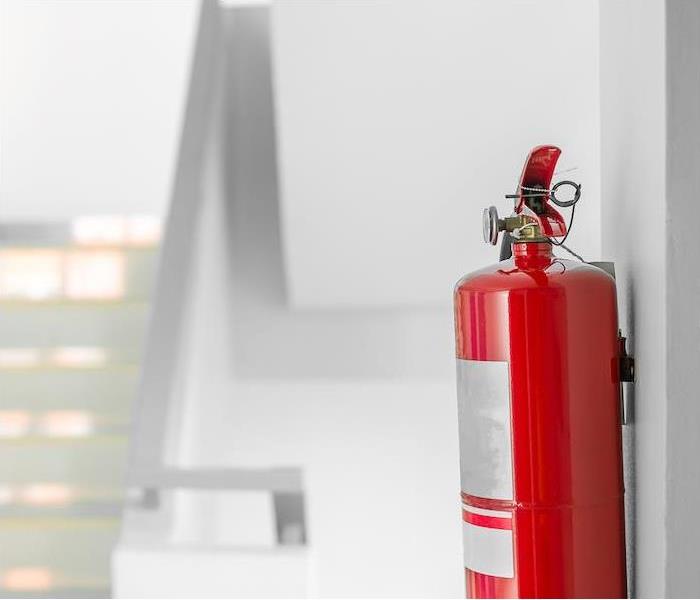Fire Extinguisher Basics | SERVPRO® of East Mecklenburg/Matthews
12/21/2021 (Permalink)
 If fire breaks out, SERVPRO of East Mecklenburg/Matthews has the tools and experience to repair, restore and recover your property.
If fire breaks out, SERVPRO of East Mecklenburg/Matthews has the tools and experience to repair, restore and recover your property.
Most of us are familiar with the look and concept of a fire extinguisher. We know the image of the big red canister with the black hose, with a metallic grip and handle on top. We saw them at school behind the near-sacred glass, and now we see them at work or in hospitals.
We’re well-acquainted with the idea—but how many of us have ever held one or discharged one? If a fire started right now, would you know what to do with a fire extinguisher?
Let’s look at some basics you need to know as it regards our little red flame-retardant friends.
You don’t want to be running upstairs or across the house to get to an extinguisher when you need one, so it’s wise to keep them in the most likely places a fire might pop up at home. The No. 1 place is the kitchen, as it’s where most home fires start.
Keep at least one extinguisher on every floor of your home, plus one in the garage. Bedrooms are also recommended, as the majority of fires happen at night. And any regular source of heat should have an extinguisher nearby in case of an emergency.
This acronym will help you should the moment come when you need to operate an extinguisher to fight a small fire. Remember the word PASS:
(P)ull the pin that keeps the handle from closing.
(A)im the nozzle low, pointing the extinguisher at the base of the fire, so the source of the flame can be extinguished.
(S)queeze the lever slowly, with even, steady pressure.
(S)weep the nozzle from side to side, at the base of the fire, to cover the area in chemicals to stop it.
Fire extinguishers don’t last forever. In fact, the chemicals in them can lose their charge over time, and it’s recommended that they be recharged or replaced every six years. This is an important step, because you don’t want to be stuck with a less-than-functional extinguisher when the moment comes.
Don’t try to fight big fires with a home extinguisher. If a flame is already growing out of control, call 911 and get out. Don’t put yourself in danger. But small fires can be snuffed, provided you have the right equipment and know how to use it.
If fire breaks out at home, we have the tools and the teams to repair, restore and recover your property. Contact us to get the industry-leading expertise of SERVPRO on your side.





 24/7 Emergency Service
24/7 Emergency Service